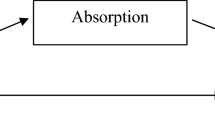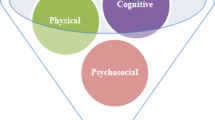Abstract
Software designers are facing huge challenges imposed by a new generation of applications that mix real and digital worlds, such as pervasive games. This type of game has recently become a worldwide phenomenon, with thousands of people walking in the streets with smartphones to interact with the physical environment. In this paper, we propose a new method to assess pervasive qualities in pervasive mobile games, which can be customized and extended to other ubiquitous applications. This method generates a quality report, which consists of a quality spreadsheet (containing metric values and comments) and a quality vector (representing the game quality profile in the form of a bar chart). In addition, we can compare quality vectors using similarity criteria. In this paper, we apply the proposed method to commercial and academic prototype games to shed more light on their pervasive characteristics and identify ways to improve the overall quality that sets these games apart from traditional digital games—that is, pervasiveness.






Similar content being viewed by others
Notes
The reader should note that we annotated the BPMN (i.e., the traced line and the indication of hierarchy) to better explain the levels in the assessment process. We chose to avoid using a swimlane in this picture (i.e., the actor), as there is only one actor in this case (the user of the process).
The companion website (http://www.ic.uff.br/~medialab/papers/2017/pauc) contains a report with all checklists and additional comments. This website also provides the quality spreadsheet for public use.
Available at http://www.ic.uff.br/~medialab/papers/2017/pauc
These assessments are available at http://www.ic.uff.br/~medialab/papers/2017/pauc
Here, we assume that if players generally consider a given pervasive game as “good” (i.e., satisfying, enjoyable), then this game should have a “good” pervasive experience. However, we are aware of how difficult it is to explain why players would consider a game “good.”
For the complete analysis, please refer to http://www.ic.uff.br/~medialab/papers/2017/pauc
See https://www.oodaloop.com/osint/homelandsecurity/2014/04/03/google-ingress-game-players-subject-of-law-enforcement-fusion-center-alert/ concerning homeland security, and http://www.irishtimes.com/news/ireland/irish-news/online-gamer-died-on-poolbeg-pier-capture-mission-inquest-hears-1.2645636 reporting a fatal case.
Please refer to http://www.ic.uff.br/~medialab/papers/2017/pauc
References
Valente L, Feijó B, Ribeiro A, Clua E (2016) The concept of pervasive virtuality and its application in digital entertainment systems. In: Wallner G, Kriglstein S, Hlavacs H, Malaka R, Lugmayr A, and Yang H-S (eds) Entertainment computing - ICEC 2016. Springer International Publishing, pp 187–198
Callele D, Neufeld E, Schneider K (2005) Requirements engineering and the creative process in the video game industry. In: 13th IEEE International Conference on Requirements Engineering, 2005. Proceedings, pp 240–250
Alves C, Ramalho G, Damasceno A (2007) Challenges in requirements engineering for mobile games development: the meantime case study. In: Requirements Engineering Conference, 2007. RE ‘07. 15th IEEE International, pp 275–280
Furtado AWB, Santos ALM, Ramalho GL (2010) Streamlining domain analysis for digital games product lines. In: Bosch J, Lee J (eds) Software product lines: going beyond. Springer, Berlin Heidelberg, pp 316–330. https://doi.org/10.1007/978-3-642-15579-6_22
Bentley T, Johnston L, von Baggo K (2002) Putting some emotion into requirements engineering. In: Proceedings of the 7th Australian Workshop on Requirements Engineering
Callele D, Neufeld E, Schneider K (2010) An introduction to experience requirements. In: Requirements engineering conference (RE), 2010 18th IEEE international, pp 395–396
Björk S, Falk J, Hansson R, Ljungstrand P (2001) Pirates! Using the physical world as a game board. In: Proceedings of Interact 2001. IOS Press, pp 9–13
Struppek M, Willis KS (2007) Botfighters. In: Borries F, Walz SP, and Böttger M (eds) Space time play. Birkhäuser Basel, pp 226–227
Rashid O, Bamford W, Coulton P, Edwards R, Scheible J (2006) PAC-LAN: mixed-reality gaming with RFID-enabled mobile phones. Comput Entertain CIE 4:4
Ballagas R, Kratz SG, Borchers J, Yu E, Walz SP, Fuhr CO, Hovestadt L, Tann M (2007) REXplorer: a mobile, pervasive spell-casting game for tourists. CHI 07 Ext. Abstr. Hum. Factors Comput Syst 1929–1934
S.T. Start: Zombies, Run!, https://zombiesrungame.com/
Sra M, Schmandt C (2015) Expanding social mobile games beyond the device screen. Pers Ubiquitous Comput 19(3-4):495–508. https://doi.org/10.1007/s00779-015-0845-0
Niantic Inc: Ingress, https://www.ingress.com/
Niantic Inc: Pokémon Go, http://www.pokemongo.com/
Valente L, Feijó B, Leite JCS (2015) do P.: mapping quality requirements for pervasive mobile games. Requir Eng 1–29
Ryan MJ (2014) The role of stakeholders in requirements elicitation. INCOSE Int Symp 24(1):16–26. https://doi.org/10.1002/j.2334-5837.2014.tb03131.x
Freeman P (1987) Software perspectives: the system is the message. Addison-Wesley Longman Publishing Co., Inc., Boston
Boehm BW, Brown JR, Lipow M (1976) Quantitative evaluation of software quality. In: Proceedings of the 2Nd International Conference on Software Engineering. IEEE Computer Society Press, Los Alamitos, CA, USA, pp 592–605
Boehm B, In H (1996) Identifying quality-requirement conflicts. IEEE Softw 13(2):25–35. https://doi.org/10.1109/52.506460
Fenton NE, Neil M (1999) A critique of software defect prediction models. IEEE Trans Softw Eng 25(5):675–689. https://doi.org/10.1109/32.815326
Fenton NE, Neil M (2000) Software metrics: roadmap. In: Proceedings of the Conference on The Future of Software Engineering. ACM, New York, pp 357–370
Jiang Y, Cuki B, Menzies T, Bartlow N (2008) Comparing design and code metrics for software quality prediction. In: Proceedings of the 4th International Workshop on Predictor Models in Software Engineering. ACM, New York, pp 11–18
Chung L, Nixon BA, Yu E, Mylopoulos J (1999) Non-functional requirements in software engineering. Spring
Leite JCSP, de Moraes EA, de Castro CEPS (2007) A strategy for information source identification. In: Anais do WER07 - Workshop em Engenharia de Requisitos, Toronto, pp 25–34
Valente L, Feijó B (2013) A survey on pervasive mobile games. Departamento de Informática, PUC-Rio, Rio de Janeiro
Lindt I, Ohlenburg J, Pankoke-Babatz U, Ghellal S (2007) A report on the crossmedia game epidemic menace. Comput Entertain CIE 5(1):8. https://doi.org/10.1145/1236224.1236237
Barkhuus L, Chalmers M, Tennent P, Hall M, Bell M, Sherwood S, Brown B (2005) Picking pockets on the lawn: the development of tactics and strategies in a mobile game. In: Beigl M, Intille S, Rekimoto J, Tokuda H (eds) UbiComp 2005: ubiquitous computing. Springer, Berlin, p 903
Benford S, Anastasi R, Flintham M, Drozd A, Crabtree A, Greenhalgh C, Tandavanitj N, Adams M, Row-Farr J (2003) Coping with uncertainty in a location-based game
Bell M, Chalmers M, Barkhuus L, Hall M, Sherwood S, Tennent P, Brown B, Rowland D, Benford S, Capra M, Hampshire A (2006) Interweaving mobile games with everyday life. Proc SIGCHI Conf Hum Factors Comput Syst:417–426
Benford S, Crabtree A, Flintham M, Drozd A, Anastasi R, Paxton M, Tandavanitj N, Adams M, Row-Farr J (2006) Can you see me now? ACM Trans Comput Hum Interact TOCHI 13(1):100–133. https://doi.org/10.1145/1143518.1143522
Montola M, Stenros J, Wærn A (2009) Pervasive games: theory and design. Morgan Kaufmann
Good IJ (1977) Explicativity: a mathematical theory of explanation with statistical applications. Proc R Soc Lond Ser Math Phys Sci 354(1678):303–330. https://doi.org/10.1098/rspa.1977.0069
Chatzidimitris T, Gavalas D, Kasapakis V (2015) PacMap: Transferring PacMan to the physical realm. In: Giaffreda R, Vieriu R-L, Pasher E, Bendersky G, Jara AJ, Rodrigues JJPC, Dekel E, and Mandler B (eds) Internet of things. User-centric IoT. Springer International Publishing, pp 139–144
Flintham M, Greenhalgh C, Lodge T, Chamberlain A, Paxton M, Jacobs R, Watkins M, Shackford R (2011) A case study of exploding places, a mobile location-based game. In: Proceedings of the 8th International Conference on Advances in Computer Entertainment Technology. ACM, New York, NY, USA, pp 30:1–30:8
Broll W, Ohlenburg J, Lindt I, Herbst I, Braun A-K (2006) Meeting technology challenges of pervasive augmented reality games. In: Proceedings of 5th ACM SIGCOMM Workshop on Network and System Support for Games. ACM, New York, NY, USA
Jegers K (2007) Pervasive game flow: understanding player enjoyment in pervasive gaming. Comput Entertain CIE 5
Sweetser P, Wyeth P (2005) GameFlow: a model for evaluating player enjoyment in games. Comput Entertain 3(3):3–3. https://doi.org/10.1145/1077246.1077253
Guo H, Trætteberg H, Wang AI, Zhu M (2010) TeMPS: a conceptual framework for pervasive and social games. In: Digital Game and Intelligent Toy Enhanced Learning, IEEE International Workshop on. IEEE Computer Society, Los Alamitos, CA, USA, pp 31–37
Nevelsteen KJL (2015) A survey of characteristic engine features for technology-sustained pervasive games. Springer International Publishing, Cham. https://doi.org/10.1007/978-3-319-17632-1
Blythe M, Reid J, Wright P, Geelhoed E (2006) Interdisciplinary criticism: analysing the experience of riot! a location-sensitive digital narrative. Behav Inf Technol 25:127–139
Basili V (1992) Software modeling and measurement: the goal/question/metric paradigm. University of Maryland
Leite JCSP, Freeman PA (1991) Requirements validation through viewpoint resolution. IEEE Trans Softw Eng 17(12):1253–1269. https://doi.org/10.1109/32.106986
Easterbrrok S, Nuseibeh B (1996) Using ViewPoints for inconsistency management. Softw Eng J 11(1):31–43. https://doi.org/10.1049/sej.1996.0004
Sánchez JLG, Vela FLG, Simarro FM, Padilla-Zea N (2012) Playability: analysing user experience in video games. Behav Inf Technol 31:1033–1054
Leveson NG (2012) Engineering a safer world: systems thinking applied to safety. The MIT Press, Cambridge
Chappell D, Eatough V, Davies MNO, Griffiths M (2006) EverQuest—it’s just a computer game right? An Interpretative Phenomenological Analysis Online Gaming Addiction. Int J Ment Health Addict 4:205–216
Acknowledgements
This research was supported by the following Brazilian government agencies: CAPES (Federal Agency for Support and Evaluation of Graduate Education, linked to the Ministry of Education); CNPq (National Council for Scientific and Technological Development) and FINEP (Brazilian Innovation Agency), which belong to the MTCIC (Ministry of Science, Technology, Innovation and Communication); and FAPERJ (Research Support Foundation for the State of Rio de Janeiro). The authors are also thankful to NVIDIA Corporation for the financial support.
Author information
Authors and Affiliations
Corresponding author
Rights and permissions
About this article
Cite this article
Valente, L., Feijó, B., Leite, J. et al. A method to assess pervasive qualities in mobile games. Pers Ubiquit Comput 22, 647–670 (2018). https://doi.org/10.1007/s00779-017-1107-0
Received:
Accepted:
Published:
Issue Date:
DOI: https://doi.org/10.1007/s00779-017-1107-0




